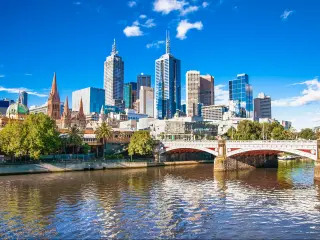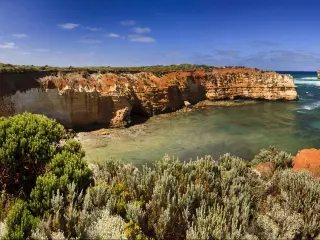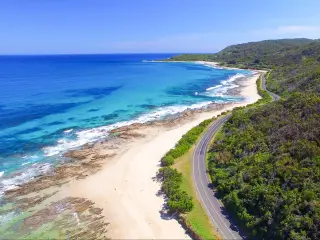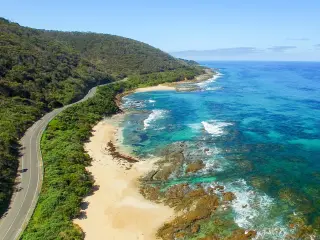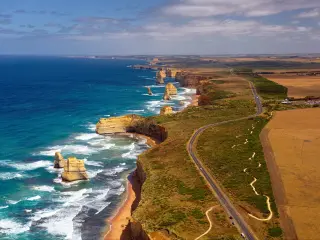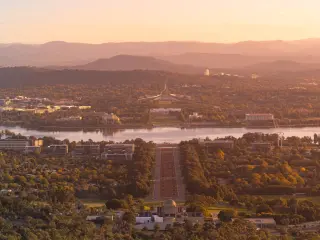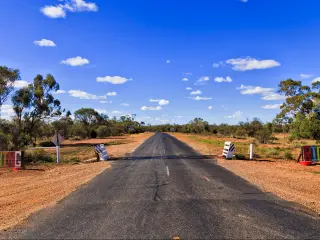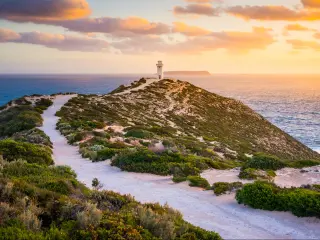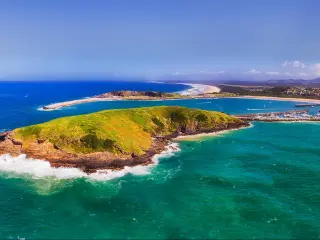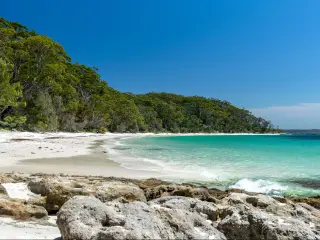Where does the Great Ocean Road Start and Finish?
The Great Ocean Road travels along the coast of Victoria in southern Australia. It takes in some stunning coastal landscapes, as you might expect, but also lets you experience rugged cliffs and lush green rainforests as it heads inland for a while across Cape Otway.
The Great Ocean Road in Australia starts in Torquay, 100km southwest of Melbourne, and travels 243 km along the coast until it reaches Allansford, near Warrnambool. It's also possible to drive this super-scenic road in reverse.
Whichever direction you're travelling in, the Great Ocean Road is said to be one of the world's great drives, and you're in for some unforgettable views as you travel along the coast.
Where is the Great Ocean Road located and where does it start and end?
The Great Ocean Road starts in the small town of Torquay, 100km southwest of Melbourne, then winds its way past beaches and through rainforests all the way to Allansford.
Most people drive along the Great Ocean Road from Melbourne, heading in the direction of Allansford and Warrnambool. If you're travelling from other parts of the country, Melbourne is the easiest place to fly into ahead of a trip along the Great Ocean Road, plus you can pick up a rental car in Melbourne if you need to.
Driving east also means you'll have uninterrupted views of the ocean on your left-hand side most of the way.
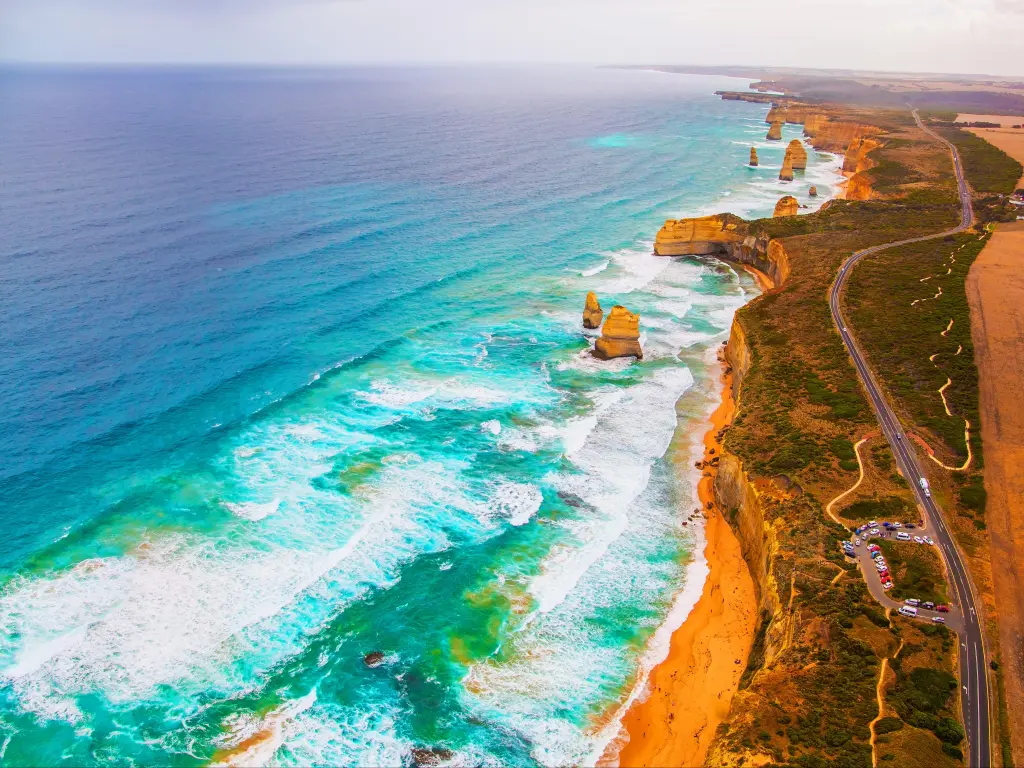
The starting point of the Great Ocean Road
Many people begin their trip along the Great Ocean Road with the drive out from Melbourne, although it's also a good option to spend the night in Torquay before getting an early start on the scenic drive.
The official starting point of the route is in the town of Torquay, where you can get a great brunch if you left the city early, or spend time on the beach.
A few kilometres further along the road you'll reach the Great Ocean Road Sign, which hangs off the Memorial Arch. Many people believe this to be the starting point of the Great Ocean Road, but it's actually just one of the many landmarks you'll see along the way.
The end point of the Great Ocean Road
Allansford marks the other end of the route along the Great Ocean Road. However, many people continue on to the bigger city of Warrnambool which has more facilities compared to the smaller towns along the Great Ocean Road.
If you're picking up the Great Ocean Road as part of a longer road trip from Adelaide, it's easy to start the drive in Allansford and head east to Melbourne.
Did the Great Ocean Road change over time?
The Great Ocean Road was only built a century ago, and it still follows the same route along the coast.
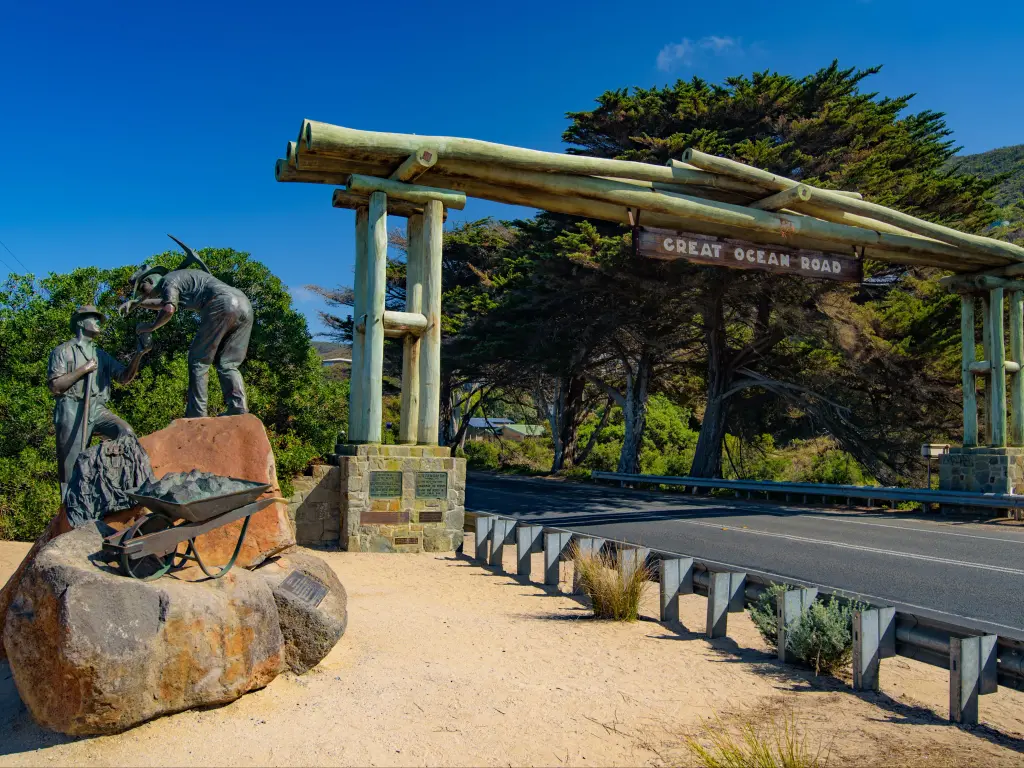
The road was difficult to build, and although construction started in 1919, it wasn't completed until 1932. The men who worked on the road were veterans of World War 1, and the whole road is designated as a memorial to their fellow soldiers.
As you might expect for a road that hugs the ocean for so many kilometres, the Great Ocean Road has experienced closures due to the effect of the elements, including bushfires, landslides, storm damage and cliff falls
Where can I start my Great Ocean Road trip?
As you've already read, the most popular starting point for a Great Ocean Road trip is Melbourne, the nearest city to the route. It's also driveable from Adelaide and Canberra, although you'll probably want to stop for a night along the way.
Many travellers also visit the Great Ocean Road as part of a longer road trip from Sydney, but you might prefer to fly in to Melbourne if you're basing yourself on the east coast.
If you're taking a round trip from Melbourne, or perhaps you fancy going against the crowds, you could also take the highway from Melbourne to Allansford and then follow the Great Ocean Road east back to the city.
| Major city | Distance/Time From Torquay | Distance/Time From Allansford |
|---|---|---|
| Ballarat | 1 hour 20 minutes/105 km | 5 hours 10 minutes/345 km |
| Geelong | 20 minutes/20 km | 4 hours 15 minutes/260 km |
| Ballarat | 1 hour 20 minutes/105 km | 5 hours 10 minutes/345 km |
| Bendigo | 2 hours 30 minutes/200 km | 6 hours 30 minutes/440 km |
| Warrnambool | 4 hours 10 minutes/253 km | 10 minutes/10 km |
| Mount Gambier | 6 hours 10 minutes/435 km | 2 hours 20 minutes/195 km |
| Mount Gambier | 6 hours 10 minutes/435 km | 2 hours 20 minutes/195 km |
| Canberra | 7 hours 50 minutes/750 km | 11 hours 30 minutes/990 km |
| Sydney | 10 hours/965 km | 13 hours 40 minutes/1,200 km |
| Adelaide | 10 hours 30 minutes/845 km | 6 hours 50 minutes/600 km |
How long does it take to drive on the Great Ocean Road?
Although the Great Ocean Road is one of the world's epic drives, it's actually a relatively short route that you can drive in around 4 hours if you don't make any stops on the route from Torquay to Allansford.
If you're driving the Great Ocean Road as a round trip out of Melbourne, you should allow at least 8 hours for your drive if you're taking the Princes Highway back to the city once you reach Allansford.
Assuming you'll want to stop to enjoy the view a number of times along the way, we'd suggest leaving at least 15 minutes per viewpoint, which could add up to 2 hours to your drive even if you only make a short stop.
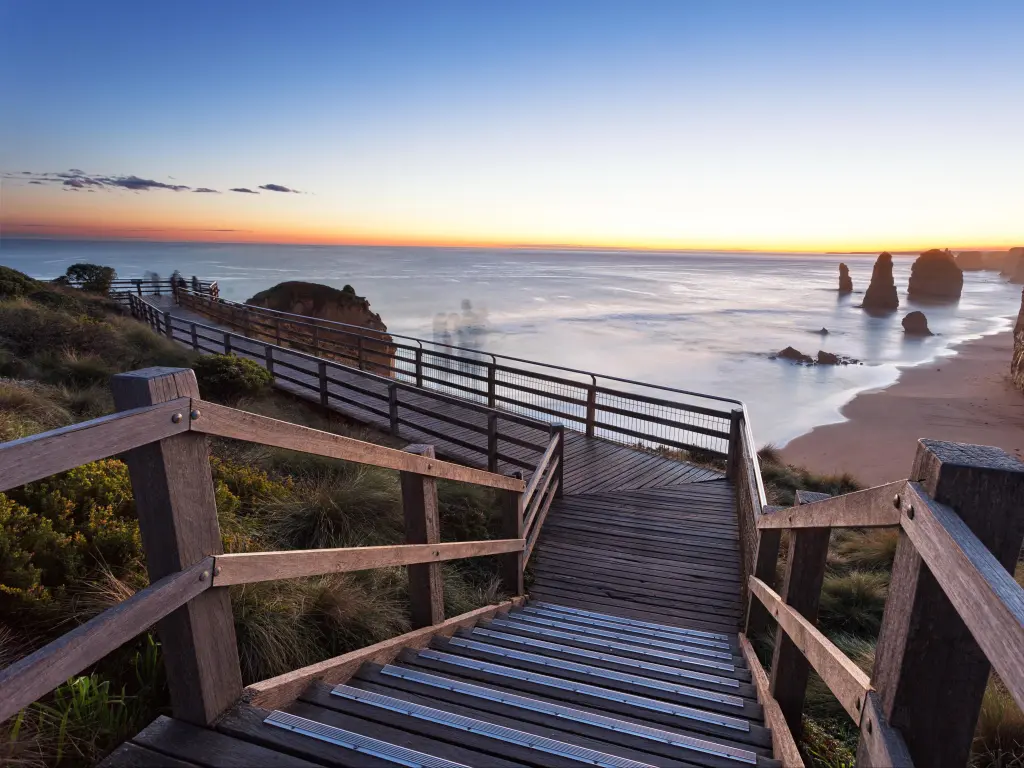
This takes your minimum trip time to 6 hours (10 hours as a round trip from Melbourne) but you should also add at least another hour if you want to follow one of the shorter hiking trails or spend time walking on the beach.
There are some beautiful small towns to stop and spend time in along the Great Ocean Road, so if you have a weekend or longer to fill, why not stay overnight so that you can spend a little longer enjoying the clifftop views, rainforest walks and ocean sunsets?
You'll also have to factor in the chance of hitting traffic on this popular route. You might experience congestion heading out of Melbourne and travelling through Geelong – keep this in mind if you're hoping to get out to Torquay before the crowds build up.
The first part of the road is usually the busiest and in high season it's not uncommon to experience congestion between Torquay and Lorne – sometimes further.
Popular stops including the Memorial Arch and the Twelve Apostles can be crowded, so be prepared to queue for a parking space. The road gets quieter the further you travel from Melbourne so if you have a real aversion to crowds, why not join the road halfway.
You're also less likely to sit in traffic if you're driving from Allansford, though on busy days your Great Ocean view might feature queuing cars heading in the opposite direction as you approach Torquay.
Attractions and scenic areas on the Great Ocean Road
The Great Ocean Road travels through a number of oceanfront towns and villages, so whether you want to pause for coffee, a meal or to dip your feet in the ocean, you'll have plenty of opportunities to do so.
Each of the places along the route has its own character and local attractions, so take your time to explore them as you make your way along the Great Ocean Road. Some of the most popular towns along the route are:
- Torquay - the starting point for the Great Ocean Road, which is home to the spectacular surf destination, Bells Beach.
- Anglesea - as well as a wide, sandy beach, this small town has an Art Walk which you can follow if you're spending a little time in the town.
- Aireys Inlet - grab a bite to eat in this small town close to the famous Great Ocean Road sign.
- Lorne - from late autumn to early spring you can spot migrating whales just off the coast at Lorne.
- Apollo Bay - stop off for an amazing seafood meal here or, if you're staying the night, go for a tasting of local craft beers.
- Port Campbell - this sheltered inlet is a great place to stop for refreshments or to cool down with a swim at the lifeguard-patrolled beach in summer.
- Allansford - the end of the Great Ocean Road.
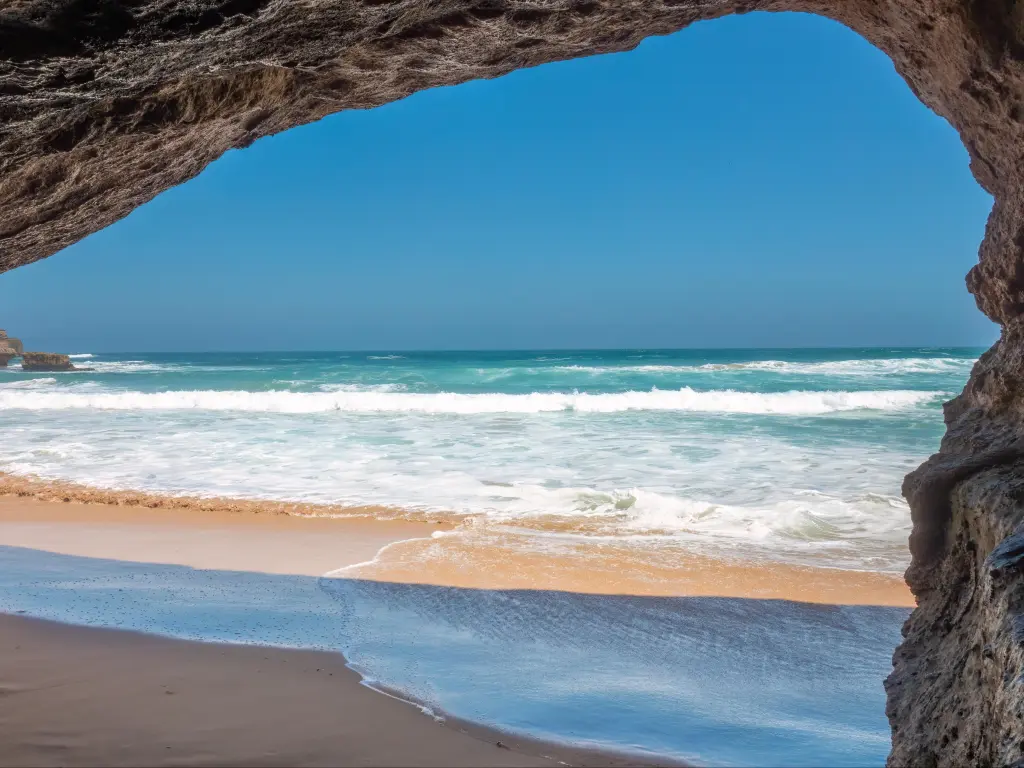
Of course, the Great Ocean Road is also famous for its stunning ocean views and towering natural landmarks that have been carved out by the waves. You can pull up and park at all of the most popular spots, just look out for the signs as you make your way along the road:
- Memorial Arch/Great Ocean Road Sign
- Teddy's Lookout (Lorne)
- Mariners Lookout (Apollo Bay)
- Cape Otway Lighthouse
- The Twelve Apostles
- Loch Ard Gorge
- London Bridge
- Bay of Islands Coastal Park
This is also a great drive for travellers who like to enjoy the great outdoors. It goes without saying that there are endless opportunities to spend time at the beach on this coastal drive, although you'll probably want to wear a wetsuit for most of the year. There are also some great places to hike and surf along the Great Ocean Road:
- Bells Beach – a world-class surfing beach which features in the World Surf League competition.
- Split Point Lighthouse - a short hike from Aireys Inlet takes you up to the clifftop from where this haunted lighthouse looks out across the ocean.
- Erskine Falls – there are short walks and longer hikes through the rainforest to the beautiful waterfalls near Lorne.
- Great Otway National Park - explore the changing landscapes of the national park on foot.
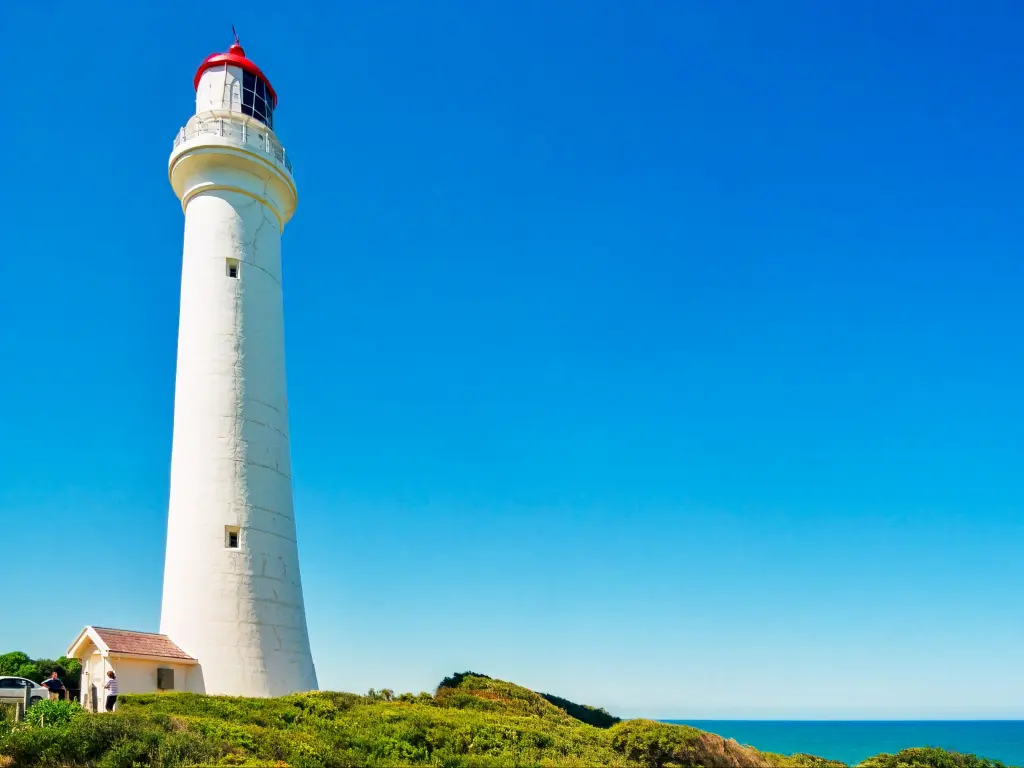
Things to know that can impact your driving time
You might only have a day or two to enjoy the Great Ocean Road, so you'll want to spend as much time as possible enjoying the view.
With this in mind, here are our top tips to drive the Great Ocean Road in the shortest time possible:
- Have two drivers available so you can alternate and stay fresh – and take turns enjoying the view.
- Choose an economical car, rather than a gas-guzzler. That way you can minimize refueling stops.
- Travel mid-week or outside the summer season, which is busiest from December to February, if you want to avoid the biggest crowds.
- Leave Melbourne early if that's where you're starting out. Many tour buses depart from the city between 7 and 8 am and chances are you'll have a smoother and less crowded drive if you hit the road ahead of the convoy.
- Consider driving the route in reverse if you're travelling in summer – most people and tour buses start in Melbourne but if you begin your drive in Allansford you'll be driving against most of the traffic.
- Take a picnic and snacks so that you don't need to queue for lunch.
Whether you're heading along the Great Ocean Road as a day trip out of Melbourne or on a longer road trip, the Great Ocean Road between Torquay and Allensford is a fabulously scenic drive - definitely a must-see route when you're driving in Australia!

